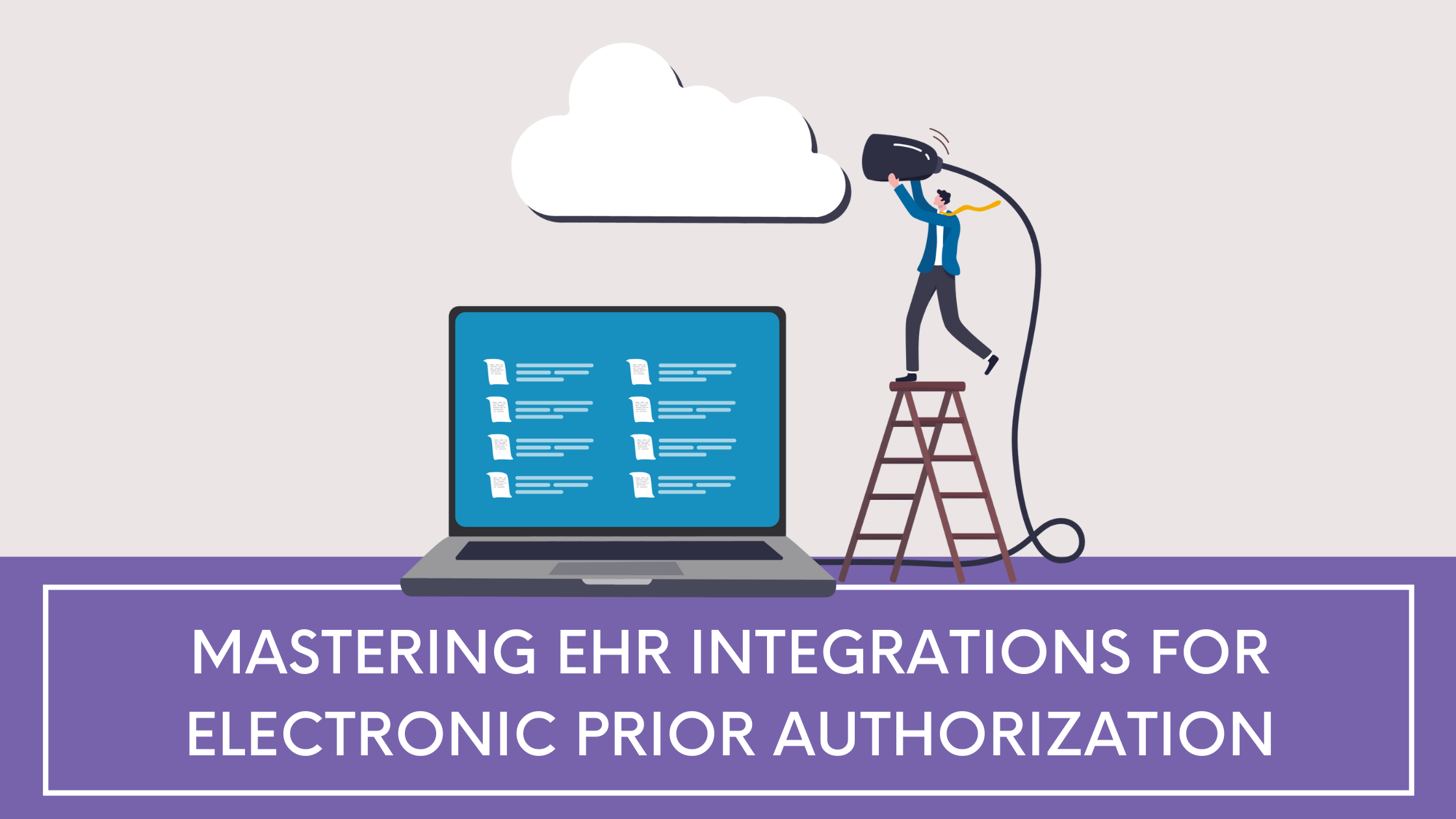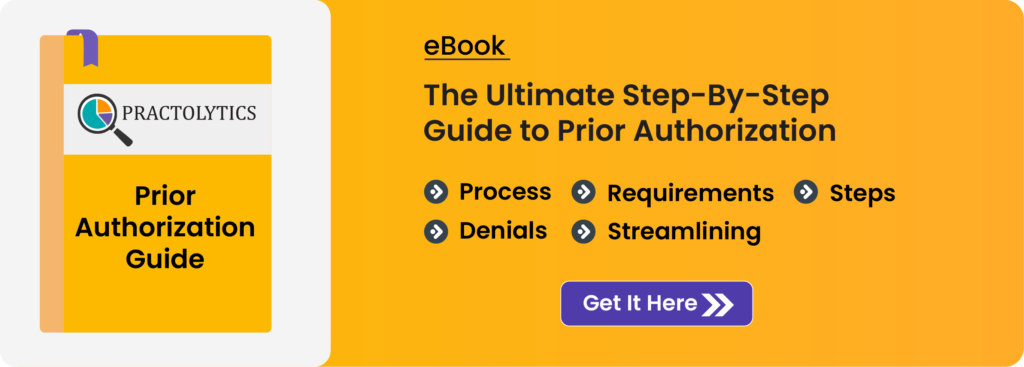Mastering EHR Integrations for Electronic Prior Authorization
As healthcare institutions look for ways to use health IT to reduce clinician load and enhance patient care, the very next step for such a digital health revolution might be automating the time-consuming prior authorization procedure with (ePA) -Electronic Prior Authorization.
By reducing clinician workload and delivering medicines to patients very swiftly, automating prior authorization services can result in greater quality treatment.
Table of Contents
What exactly is Electronic Prior Authorization (ePA)?
Prior authorization services or pre-authorization services are the usage management method used by insurers to guarantee patients receive the best cost-effective medicine for their medical requirements.
When a medication requires prior authorization, clinicians must file specific documentation to the insurer in order to recommend the drug. The standard prior authorization procedure, on the other hand, is time-consuming & could delay patient treatment.
According to a 2019 AMA (American Medical Association) poll, 64% of physicians must wait a solid business day to obtain a pre-authorization response from insurers, while 29% must wait for at least 3 business days.
This lag might result in patient care difficulties. According to the poll, prior authorizations delay patient treatment for 91% of physicians, with 48% reporting that prior authorizations frequently or always had this impact.
Health IT, however, can help patients obtain their prescriptions more quickly while simultaneously reducing a few clinicians’ workloads.
Electronic Prior Authorization (ePA) seeks to shorten the procedure by submitting prior authorization documentation online rather than via phone or fax. ePA could be readily incorporated into EHR systems, allowing doctors to obtain prior authorization inside their clinical processes.
Is ePA (Electronic Prior Authorization) beneficial?
Clinicians who employed ePA for the majority of their patients experienced fewer admin tasks associated with prior auths- 54% experienced fewer prior authorization services -related calls and texts while 58% had reduced prior authorization services -related faxes.
However, over half of physicians across the whole provider community claimed no reduction in the number nor time spent on telephone calls & faxes while adopting ePA.
Overall, 7 out of 10 responders who have used ePA- Electronic Prior Authorization for the majority of their patients said the technology speed up treatment delivery. Just under 3 out of 10 clinicians stated that the time they spent on care delivery had not changed (27%).
Altogether, 43% of providers believed that ePA boosted the pace of care delivery, while almost 50% reported zero improvements in healthcare delivery speed (49%).
Is there any interest from insurers for this?
Surescripts polled clinicians in 2016 & found that ePA is indeed a key goal for 83% of them, but 64% agreed that EHR providers should offer a solution for faster pre-authorization services.
ePA – Electronic Prior Authorization is becoming highly significant, & EHR suppliers agree. 88% of suppliers said they are very conscious of the requirement for ePA among their clients. Moreover, according to 86% of EHR manufacturers, ePA is a feature that users expect the platforms to offer.
Similar results were seen in a June 2020 AHIP poll; over 85% of insurers viewed pre-auth automation as a crucial area of provider partnership. A little more than 90% of plans reported expediting the prior authorization procedures for prescription drugs (91%) & health treatment (89%) while largely depending on ePA in each case.
Challenges with ePA Implementation and Use
Regardless of the potential of ePA or the provider’s willingness to use it, there are numerous difficulties. According to research released in the JAMA Network Open, provider training and misfiring problems prevent ePA EHR linkages from being successful.
The study authors used EHR & pharmaceutical data to compare ePA medications vs non-ePA medications in terms of insurance plan, drug, and site prior to and after ePA deployment.
Altogether, 24,930 ePA medications (64.2%) and 26,731 control medications (68.8%) are fulfilled; this is a minor difference.
The researchers offered a number of hypotheses for this outcome.
Firstly, less than 2% of medications were fired by ePA, which is lower than the national norm. This raises the possibility of some malfunction.
For frequently prescribed drugs for chronic conditions, there weren’t any notable changes. In contrast, to control medications, there were greater gaps in adherence to treatment for dermatology agents & lifestyles prescriptions for ePA.
The authors of the research hypothesised that ePA could have malfunctioned for drugs that didn’t need prior authorization, such as vaccines, inexpensive topical drugs, or glucose supply.
Additionally, given that not all medical insurers have access to ePA, it’s possible that physicians were using both the ePA and conventional prior authorization systems at once. In fact, based on the study’s authors, almost 75% of physicians that employ ePA use multiple pre-authorization service methods.
The authors then pointed out that clinicians could have encountered a period of adjustment following ePA EHR integration, which prevented them from utilizing ePA towards its full potential. For instance, it’s possible that prior authorization rejection in-basket messages weren’t viewed right away.
The authors did point out that with use, these obstacles could become less apparent over time.
Techniques for enhancing the use and integration of ePA
The JAMA – (Journal of the American Medical Association) researchers proposed that eliminating connectivity among payers & ePA might prevent drug misfiring, particularly since payer data may not be kept up to date.
“This may become more feasible as integrated healthcare network & risk-bearing agreements with providers rise, as a result of the increased attention on the adoption of technology to enhance patient care,” they stated.
Furthermore, integrating information & processing with pharmacy into the EHR- Electronic Health Record can improve efficiency.
“These findings suggest several larger implications for healthcare IT initiatives, including the significance of assessing whether treatments that are expected to enhance care really do,” wrote the study’s authors.
“Healthcare IT is simply one sort of tool,” they added, “and in this case, computerizing the prior auth procedure might not have truly resolved the obstacles to efficiency, particularly when not all insurers engage in the system.”
The authors stated that their study “emphasizes the necessity for comprehensive evaluation of these sorts of treatments to inform efficacy inside healthcare systems and examine potential implementation challenges.”
Final Thoughts
Although ePA may have perks for both patients and physicians, like with many other health IT projects, its actual success won’t occur until it is widely adopted and providers have got enough training.
Starting prior authorization EHR integration with Practolytics is the best option for reducing your clinical load. We specialize in next-generation RCM solutions like prior authorization services to assist medical practices in improving cash flow and streamlining their medical billing procedures.
Please contact us at +(803) 932-9624 to learn more about how we may assist you.
ALSO READ – 5 Approaches to Streamline Prior Authorization Turnaround Times
Talk to Medical Billing Expert Today — Get a Free Demo Now!






